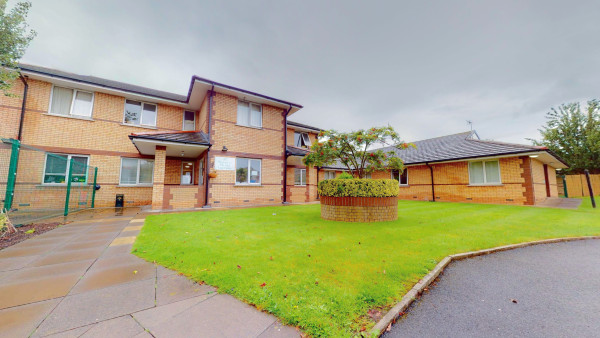Search for the Best Care Homes
in your Area NOW
Welcome to Care Homes in Lancaster
There are currently 14 Care Homes Listed in Lancaster
Where do you Start ?
Does it Feel Overwhelming ? Understandably
Let us Advise you for FREE .
Fill out the Quick Application form
And we will find the Most Suitable Care Home for FREE

Discover the enchanting world of Care Homes in Lancaster. Explore their warm, inviting environments and exceptional care for the elderly.
Lancaster, a vibrant city nestled in the heart of the United Kingdom, is home to a thriving community of care homes that cater to the needs of its elderly residents. In this article, we will embark on a journey through the enchanting world of care homes in Lancaster, exploring their warm, inviting environments and the exceptional care they provide. From picturesque settings to compassionate staff, discover the essence of these care homes that offer a nurturing haven for those in need.
Types of Care Homes
Nursing Homes
Nursing homes are designed to provide 24-hour medical care and supervision for individuals with complex medical needs or those who require assistance with daily activities. These homes have a team of skilled nurses and healthcare professionals who specialize in managing chronic conditions and providing necessary medical treatments. Residents in nursing homes often have access to physical therapy, speech therapy, and occupational therapy to help improve their mobility and independence.
Assisted Living Facilities
Assisted living facilities are suitable for individuals who require some assistance with daily activities but do not have significant medical needs. These homes offer a range of services aimed at promoting independence and a high quality of life. Residents usually have access to personal care assistance, medication management, housekeeping, and meal services. Assisted living facilities often strive to create a community environment, providing social and recreational activities to promote social interaction and engagement.
Memory Care Homes
Memory care homes are specifically designed to cater to individuals living with Alzheimer’s disease, dementia, or other forms of memory loss. These homes have trained staff members who understand the unique challenges faced by individuals with memory impairment. Memory care homes provide a safe and secure environment, with specialized programs and activities that aim to stimulate cognitive function and maintain a sense of familiarity and routine. These homes often offer personalized care plans, including assistance with daily activities, medication management, and specialized therapies.
Services Offered
Medical Care and Supervision
Care homes, especially nursing homes, provide medical care and supervision, ensuring that residents receive the necessary treatments for their healthcare needs. This includes medication management, regular health assessments, and access to specific medical services such as physical therapy, occupational therapy, and speech therapy.
Personal Care Assistance
Assisted living and memory care homes offer personal care assistance to help residents with activities of daily living (ADLs). This may include help with bathing, dressing, grooming, and mobility support. Trained caregivers ensure that individuals receive personalized care based on their specific needs.
Social and Recreational Activities
Care homes understand the importance of social interaction and engagement in maintaining overall well-being. They organize a variety of social and recreational activities to cater to the diverse interests of residents. These activities may include arts and crafts, exercise classes, group outings, games, and entertainment. By fostering social connections and promoting a sense of community, care homes strive to enhance the quality of life for their residents.
Location and Accessibility
Central Lancaster
Central Lancaster offers the convenience of proximity to shopping centers, restaurants, and medical facilities. Care homes located in this area provide easy access to amenities, making it convenient for residents and their families to access the services they need. The central location also ensures that residents can enjoy a vibrant atmosphere and engage in community events and activities.
Suburban Areas
Suburban areas in Lancaster offer a more peaceful and secluded setting for care homes. These locations provide a serene and calm environment, away from the hustle and bustle of the city. Residents can enjoy the tranquility of nature and a more relaxed pace of life while still having access to amenities and services.
Proximity to Amenities and Services
One of the key factors to consider when choosing a care home is its proximity to amenities and services. Care homes strive to be located near essential facilities such as hospitals, pharmacies, grocery stores, and recreational areas. This ensures that residents have easy access to medical care, supplies, and recreational opportunities to enhance their overall well-being and quality of life.
Cost of Care Homes
Monthly Fees
The cost of care homes varies depending on the type of care needed, location, and the level of services provided. Nursing homes generally have higher monthly fees due to the comprehensive medical care and supervision they offer. Assisted living facilities and memory care homes may have lower fees, as they may not require the same level of medical care. It is essential to thoroughly review and understand the fee structure of each care home to make an informed decision.
Additional Charges
In addition to monthly fees, care homes may have additional charges for specialized services or amenities. These may include charges for specialized therapies, transportation services, beauty salons, or additional meal options. It is important to clarify these additional charges upfront and determine if they fit within the desired budget.
Financial Assistance Options
For individuals who require financial assistance to afford care homes, there are various options available. These include government-funded programs, such as Medicaid and Veterans Affairs benefits, as well as long-term care insurance. Understanding eligibility requirements and exploring all the available options can help alleviate some of the financial burdens associated with care home costs.
Quality of Care
Inspections and Ratings
Care homes undergo regular inspections by state regulatory agencies to ensure compliance with safety, cleanliness, and quality standards. These inspections assess various aspects, such as staff training, medication administration, resident well-being, and overall facility conditions. Paying attention to these inspection reports and ratings can provide insight into the quality of care offered by a specific care home.
Staff-to-Resident Ratio
The staff-to-resident ratio is an important factor to consider when evaluating the quality of care in a home. Adequate staffing ensures that residents receive personalized attention and care. It is important to inquire about the staff-to-resident ratio in different care homes to ensure that the needs of residents can be adequately met.
Staff Qualifications and Training
Care homes should have a well-trained and qualified staff to provide the best possible care. Inquire about the qualifications and training of staff members, such as nurses, caregivers, and activity coordinators. Ensure that the staff receives regular training to stay updated on best practices and can meet the specific needs of the residents.
Accommodation Facilities
Private Rooms
Some care homes offer private rooms for residents who prefer more privacy. Private rooms provide residents with their own space and a sense of independence. They are equipped with the necessary furnishings and may have en-suite bathrooms. Private rooms may come at an additional cost, but they allow residents to personalize their living space to their preferences.
Shared Rooms
Shared rooms are a more cost-effective option, where residents share a living space with one or more individuals. These rooms are typically equipped with twin beds or separate living areas within a shared bedroom. Shared rooms foster companionship and a sense of community, as residents can interact and share experiences with their roommates.
Amenities and Features
Care homes often provide a range of amenities and features to enhance the comfort and well-being of their residents. These may include spacious common areas for socializing, well-maintained gardens or outdoor spaces, dining areas for communal meals, and access to fitness and wellness facilities. Some care homes may also offer on-site beauty salons, libraries, or areas for hobbies and crafts.
Specialized Care Programs
Dementia and Alzheimer’s Care
Care homes that specialize in dementia and Alzheimer’s care have tailored programs and services to support individuals with memory loss. These programs often focus on maintaining cognitive function, promoting independence, and creating a safe and stimulating environment. Specialized staff members receive training in memory care techniques and understand the unique needs of individuals with dementia.
Rehabilitation Services
Some care homes offer rehabilitation services to residents who require therapy after surgery, illness, or injury. Rehabilitation services may include physical therapy, occupational therapy, and speech therapy. These services aim to help residents regain strength, mobility, independence, and improve overall quality of life.
Palliative and Hospice Care
Care homes may have palliative and hospice care programs to provide comfort and support to individuals with life-limiting illnesses. Palliative care focuses on managing symptoms and improving quality of life, while hospice care provides specialized end-of-life care. These programs aim to ensure that residents receive compassionate and dignified care during their final stages of life.
Choosing the Right Care Home
Determining Individual Needs
When choosing a care home, it is crucial to assess the individual needs of the prospective resident. Consider factors such as the level of medical care required, assistance with daily activities, and social and recreational preferences. Determining these needs can help narrow down the options and find a care home that can adequately address them.
Visiting and Assessing Homes
Visiting prospective care homes is essential to get a sense of the environment, staff, and atmosphere. Take note of the cleanliness, overall ambiance, and interactions among staff and residents. It is important to ask questions about the care provided, resident activities, and available amenities. Talking to staff members and observing their interaction with residents can provide insights into the quality of care.
Reviewing Contracts and Policies
Before making a decision, review the contracts and policies of the care homes under consideration. Understand the fees, refund policies, and any other terms and conditions. It is advisable to seek legal advice if needed to ensure a thorough understanding of the contractual obligations and rights.
Transitioning to Care Homes
Preparing for the Move
Moving to a care home can be an emotional and logistical process. It is important to plan and prepare for the move, ensuring that personal belongings and essential documents are safely organized. It may be helpful to involve family members or a trusted individual to assist with the logistics and provide support during this transition.
Support and Resources
Care homes often provide support and resources to help residents and their families adjust to the new environment. They may offer guidance on local services, support groups for residents and families, and assistance with care planning. Taking advantage of these resources can help ease the transition and promote a positive experience in the new care home.
Managing Expectations
When transitioning to a care home, it is important to manage expectations. Understand that adjustment periods are normal, and it may take time to adapt to the new surroundings. Being patient and open to the process can help facilitate a smoother transition for both residents and their families.
Feedback from Residents and Families
Personal Experiences
Listening to personal experiences of residents and their families can provide valuable insights into the quality of care and overall satisfaction with a care home. Hearing firsthand accounts of the living experience, the level of care received, and the interactions with staff can help potential residents and their families make informed decisions.
Testimonials and Reviews
Reading testimonials and reviews from residents and families can further inform the decision-making process when choosing a care home. These testimonies often highlight positive experiences, commend exceptional care, and provide feedback on specific aspects of the home. While it is essential to consider multiple perspectives, personal testimonials can shed light on the reputation and quality of care provided.
Community Reputation
Care homes with a positive community reputation often indicate a commitment to providing high-quality care. Inquire about the reputation of care homes in the local community, including feedback from healthcare professionals and local organizations. This information can provide further assurance when selecting the right care home.
In conclusion, choosing a care home involves considering various factors such as the type of care needed, services offered, location, cost, quality of care, accommodation facilities, specialized care programs, and feedback from residents and families. Through careful evaluation, individuals can make informed decisions and find a care home that meets their specific needs and preferences. Transitioning to a care home requires planning, support, and managing expectations, ensuring a smoother adjustment for everyone involved. Ultimately, selecting the right care home can provide peace of mind and a comfortable living environment for individuals seeking quality care and support in Lancaster.


